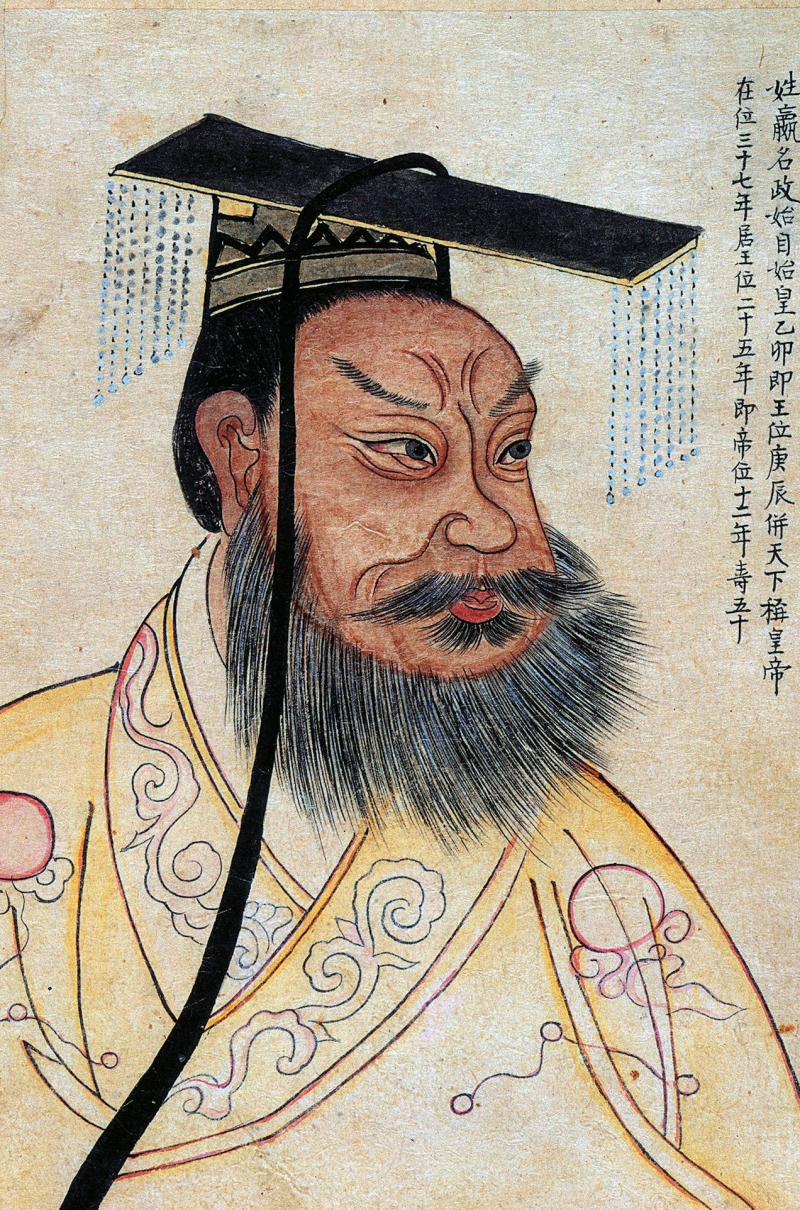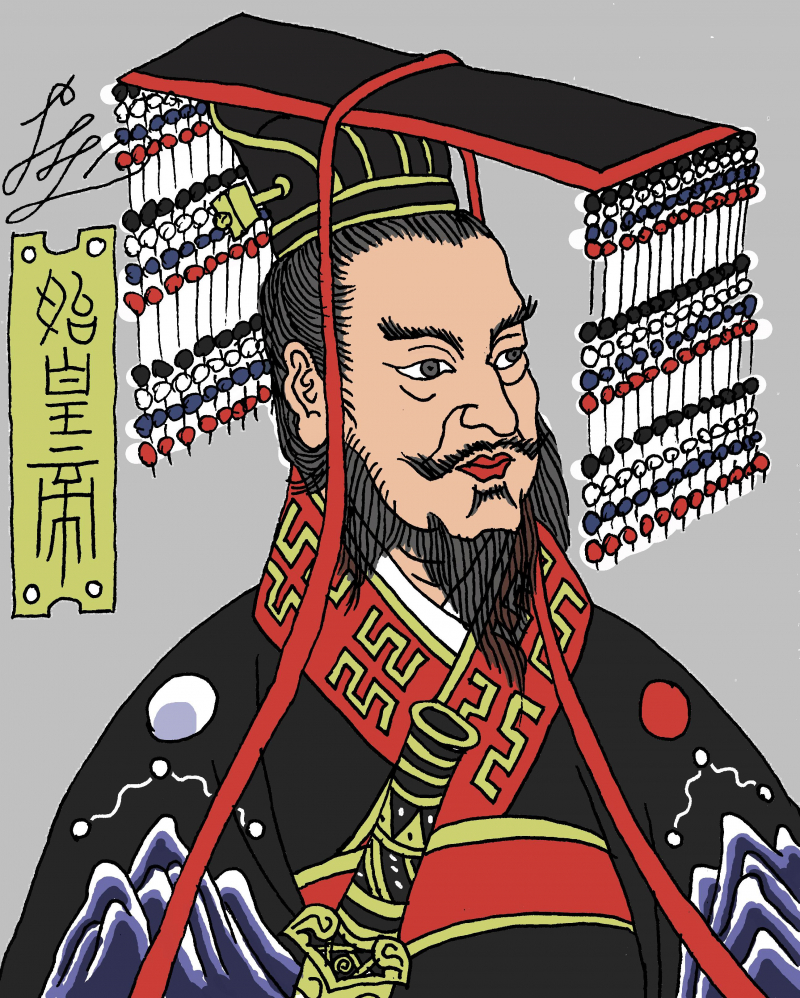Qin Shi Huang
Qin Shi Huang (Chinese: 秦始皇; 'First Emperor of Qin'; 259 - 210 BCE), also known as Shi Huangdi, was the founder of the Qin dynasty and the first emperor of a unified China. Rather than the previous Shang and Zhou rulers' title of "king," he ruled as the First Emperor of the Qin dynasty from 221 to 210 BCE. His self-invented title of "emperor" would be used by Chinese rulers for the next two millennia. Historically, he was frequently portrayed as a tyrant and strict Legalist, owing in part to the Han dynasty's harsh assessments of him. Scholars have begun to question this assessment since the mid-twentieth century, sparking considerable debate about the actual nature of his policies and reforms. Regardless, "few would contest the view that the achievements of his reign have exercised a paramount influence on the whole of China's subsequent history, marking the start of an epoch that closed in 1911," according to sinologist Michael Loewe.
His parents were King Zhuangxiang of Qin and Lady Zhao, and he was born as Ying Zheng or Zhao Zheng in the Zhao state capital Handan. The wealthy merchant Lü Buwei helped him succeed his father as ruler of Qin, and he became Zheng, King of Qin. He conquered all the other Warring States and unified all of China by the age of 38 in 221 BCE, and he ascended the throne as China's first emperor.
Campaigns south of Chu permanently added the Yue lands of Hunan and Guangdong to the Chinese cultural orbit, and campaigns in Inner Asia conquered the Ordos Loop from the nomadic Xiongnu, though the Xiongnu later rallied under Modu Chanyu.
Qin Shi Huang also collaborated with his minister Li Si to implement major economic and political reforms aimed at standardizing the diverse practices of earlier Chinese states. He is said to have banned and burned many books, as well as executed scholars. His public works projects included combining various state walls into a single Great Wall of China and constructing a massive new national road system, as well as his city-sized mausoleum guarded by a life-sized Terracotta Army. He ruled until 210 BCE, when he died during his fourth tour of Eastern China.












